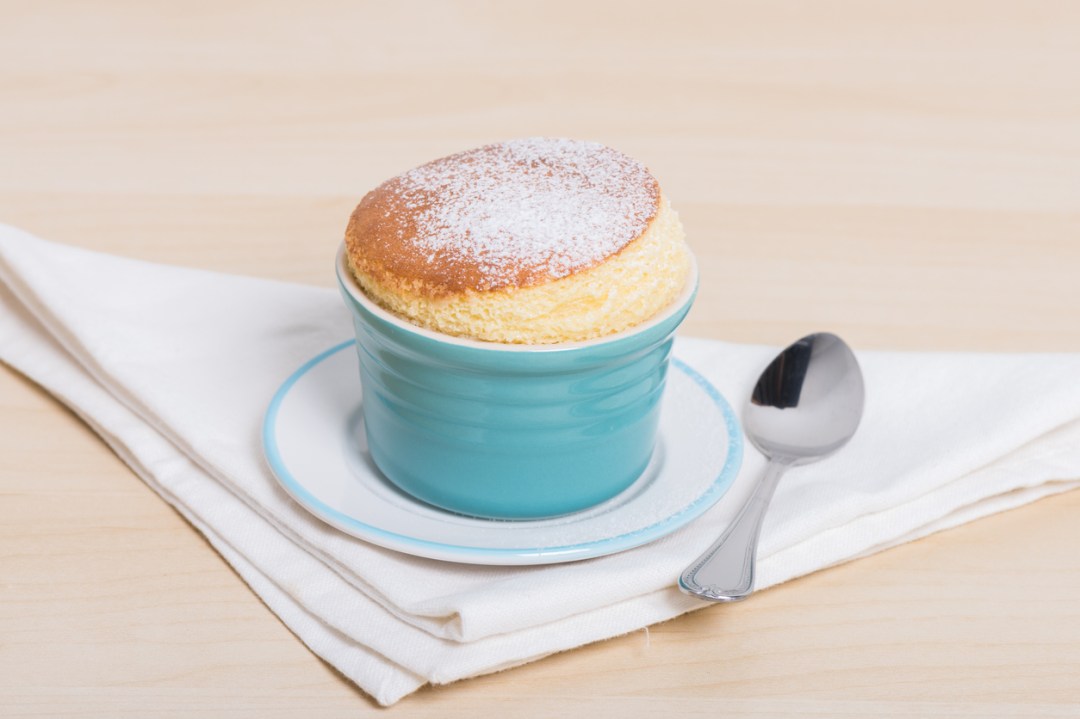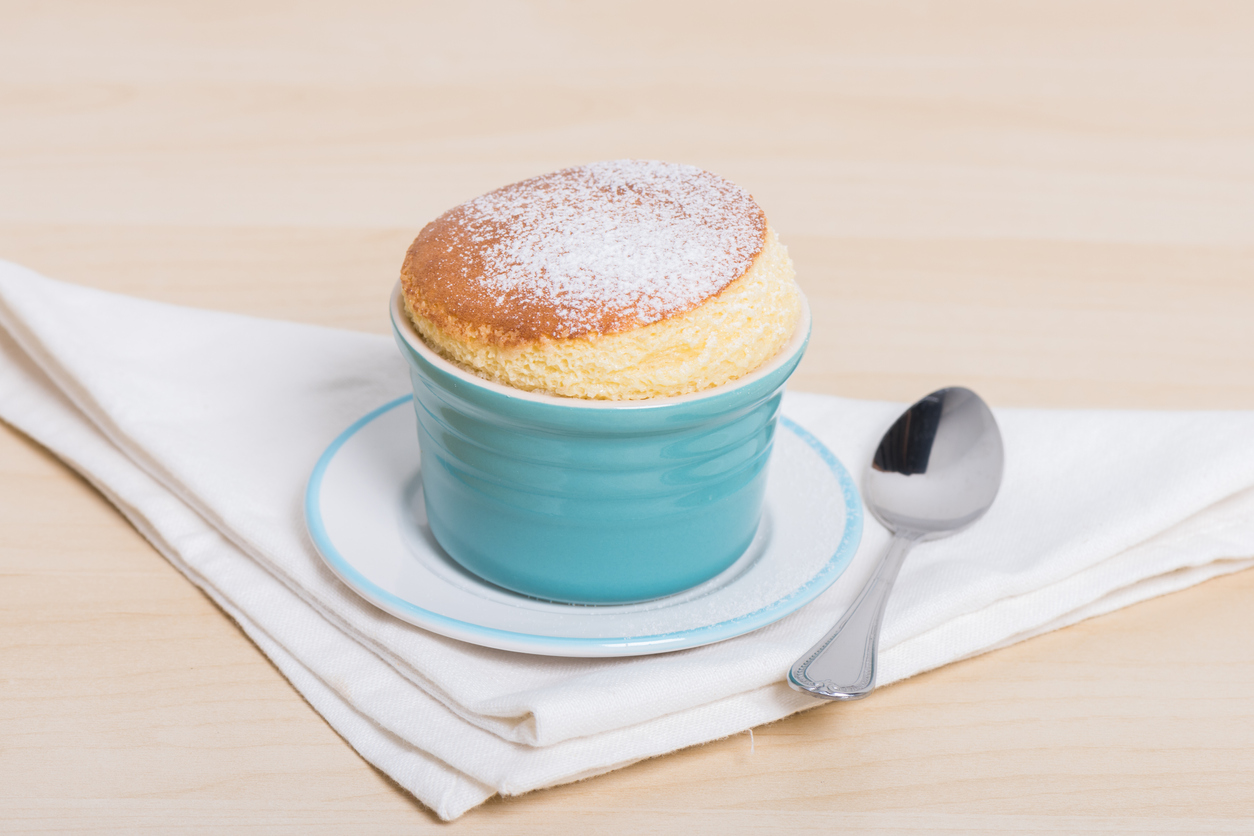I often think (and write) about how much faith baking requires. Every time you entrust a batter, a dough or a sponge to the oven, there’s little you can do to change its fate. Sure, you can make sure you don’t open the oven dough (don’t open the oven door!), you can double check your temperatures and timings, but really, it’s a waiting game. Hoping, trusting that the cake or the bread or the pastry will have risen, turned golden, or crisped.
Cooking is different: in general, you can fiddle when you’re cooking. You can taste, and add, and adjust. Cooking isn’t a done deal until you serve the finished dish, and you can lift the lid, remove from the oven, season and stir to your heart’s content without any detrimental effect.
Perhaps this preoccupies me because putting my faith in something isn’t in my nature: I’m pessimistic, sceptical, and extremely impatient. Baking forces me to go against that nature, to close my eyes and hope for the best. Especially with my old, knackered, unlit, scratched-up oven door, which brings a new, more prosaic meaning to the phrase ‘through a glass darkly’. And nothing tests my faith quite like a soufflé – as I put that slightly sloppy mixture not quite-filling the ramekin, I have to trust that it will rise up, that I have done enough. And I think that’s why baking brings me so much joy, because when it works, the rewarding of faith is tangible, undoubtable: the choux puffs, the pastry flakes, the soufflé rises.
Even if you’ve never made one, it’s likely that you know that the aim of a soufflé is height, and that once it’s in the oven, there’s not much you can do to change the end product. But you may also think that a soufflé is a technically difficult dish, not to be attempted by any but the most confident cooks, that it’s riddled with booby-traps and pitfalls. That is, I’m happy to tell you, complete nonsense.
All you’re doing with a soufflé is combining meringue with a flavoured base – normally custard, or a cheesy bechamel, or a fruit purée, or chocolate. By mixing these two things together and then cooking them, the air in the meringue lifts the base into an edible cloud. There’s no culinary wizardry, or closely-held secrets: you’re just folding egg whites into something creamy.
In fact, as cookery chemist Harold McGee explains, the air you whisk into the mix is only part of what causes the soufflé to rise. The rest is the combination of the water content (from the milk, the eggs, and any other liquid ingredients) evaporating in a contained space. As the water evaporates, producing steam, the steam in the ramekin has nowhere to go but up, causing the soufflé to rise. So even if you have the upper body strength of a gnat, and fail to bring your egg white to stiff peaks, you’re still likely to get life to your pudding.
There are a couple of ways to make a sweet soufflé: one is with an egg-yolk base, and the other just combines a fruit purée with egg whites. They’re different beasts: the latter has a simpler, cleaner finish, the lack of milk and eggs allowing flavours like mango or passionfruit or berries to shine. But the latter allows more variety, as you can infuse, dissolve or just stir the flavours into the base. And, if I had to choose, it would be for the second: an egg-white only soufflé will rise to towering heights, but can be a little two-dimensional, like a hot mousse. One that is made with an egg-yolk base, on the other hand, will be softer, almost wibbly on the outside, and inside creamy and custardy, simultaneously rich and light.
So, some words of advice: to maximise the lift, make sure you bring the egg whites to stiff peaks both before and after you add the sugar. Don’t panic about knocking all the air out when you fold it into the mix: as long as you’re not beating the mixture until it has no body, you’re fine, so fold thoroughly and confidently, making sure there are no streaks of egg white. A ramekin well-coated in butter and sugar will help the soufflé shoot upwards, giving it something to grip onto, and a judicious wipe around the very edge of the ramekin helps give you a crisp, flat finish to the soufflé. And, of course – have a little faith.

Pistachio soufflé
Makes: 2 soufflés
Takes: 15 minutes
Bakes: 15 minutes
For the crème pâtissière base:
150ml whole milk
40g pistachio paste, or 40g pistachios and a teaspoon of caster sugar
2 egg yolks
1 tbsp cornflour
25g caster sugar
For the soufflé:
15g butter, for greasing
2 large egg whites
25g caster sugar, plus 2 tablespoons
Icing sugar, for dusting
1. Melt the butter, and brush half of it into each of two 200ml ramekins, using upward strokes. Chill the ramekins for 10 minutes, just until the butter has set, and then add a second layer of brushed, melted butter. Place a tablespoon of caster sugar in each ramekin and jiggle and twist and shake the ramekins, covering the inside of the ramekins with the sugar, and knocking out any excess. Return to the refrigerator.
2. If you’re making your own pistachio paste, warm the pistachios in a pan until you can smell their toastiness. Decant them into a small food processor, along with the sugar, and blend until they release their oils and form a paste.
3. Make a crème påtissiere base. Heat the milk in a small pan until it is steaming. Meanwhile, whisk the yolks with 25g of the sugar, until they have noticeably lightened in colour. Whisk in the flour and cornflour. Pour the steaming milk into the mixture, stirring together, whisking until smooth. Stir the pistachio paste into the warm mixture.
4. Preheat the oven to 200°C/180°C fan/gas mark 6, and place a baking sheet in the oven to heat up.
5. In a clean bowl, whisk the egg whites until they form stiff peaks: when you lift your whisk from them the mixture should hold itself up, without flopping over. Add the remaining 25g of caster sugar one tablespoon at the time, whisking the mixture until stiff and glossy before adding the next spoonful.
6. Take a tablespoon of the egg whites and stir it into the pistachio custard until completely mixed in: this will make it easier to fold the rest of the egg whites in. Using a large metal spoon, gently fold in the rest of the egg whites. Do this by turning the spoon on its side, and cutting it through the middle of the mixture, then fold the bottom of the mixture up and over the top. Give the bowl a quarter turn and repeat, until the mixture is a homogenous colour – avoid overmixing!
7. Divide the mixture between the two chilled ramekins. Using a palette knife, smooth off the top of each soufflé. Take a finger and run it round the rim of each ramekin.
8. Bake for 17 minutes until the soufflés are risen and burnished; dust with icing sugar, and serve straight away.







Comments